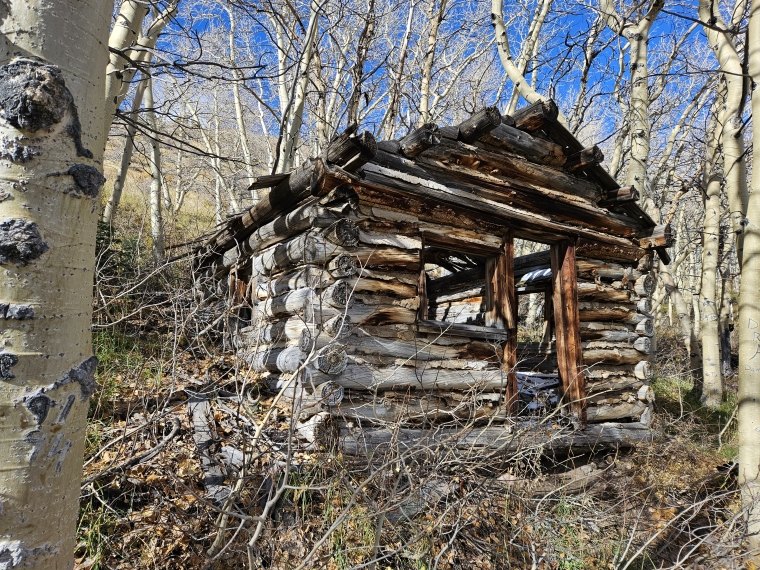A NEW CHAPTER FOR DEER TRAIL MINE
Tucked away in the serene confines of the Mount Baldy Mining District lies the Deer Trail Mine, a site that was initially discovered in 1878. Nestled within the Fishlake National Forest in Utah, this mine is a testament to the region’s mining heritage, boasting a rich history that spans generations.
Over the years, stewardship of the Deer Trail Mine has changed hands many times. However, it was in 2019 that MAG Silver Corporation, operating under the banner of Deer Trail Mine, embarked on a new chapter. They reached out to SWCA, previously listed on the past Division of Gas and Mining permit, to forge a new partnership.
MAG Silver’s mission aimed to uncover the hidden silver, gold, lead, zinc, and copper mineralization that lay within the property’s depths. Initially seeking cultural resource support from SWCA, the collaboration soon evolved to encompass a comprehensive array of endeavors. Under the leadership of Lisa Krussow, SWCA’s senior cultural resources team lead, alongside Andrew Harley, mining business line director, and Matt Petersen, senior planning technical director, the collaborative effort gained momentum. Since the initial project, SWCA has assisted Deer Trail Mine with a Plan of Operations (PoO), Environmental Assessments (EA), Categorical Exclusions (CE), and extensive biological and cultural surveys.
COMMITMENT TO SUSTAINABLE PRACTICES
Aligned in a commitment to sustainable practices, MAG Silver and SWCA worked in tandem to preserve the natural and cultural heritage of the area. Prioritizing minimal water usage, small area of disturbance, and the protection of scenic vistas, our partnership embodied a harmonious blend of progress and conservation.
To initiate MAG Silver’s exploration operations on United States Forest Service (USFS) land, SWCA worked with MAG Silver to create a PoO that contained detailed project elements and facilities, approximate surface disturbance, access requirements, drilling methods, and operational timeframes. This Plan of Operations detailed proposed monitoring and associated mitigation to minimize impacts, as well as a stand-alone reclamation plan. For the PoO, SWCA undertook a comprehensive review of past permitting documentation and compiled a detailed inventory of resources and potential challenges within the analysis area. The completeness of MAG Silver’s dataset was crucial, providing essential baseline information for National Environmental Policy Act (NEPA) analysis and ensuring comprehensive spatial coverage of the project and its surrounding terrain.
FACILITATING SEAMLESS COORDINATION AND COMPLIANCE
SWCA helped set up meetings between MAG Silver and USFS to start the consultation process for the PoO. Building on previous NEPA actions, SWCA smoothly handled the planning for the PoO and the EA, making sure everything went efficiently between all parties involved. In the early years of the permitting process, SWCA completed a Section 508-compliant EA and a CE. These documents looked into the impacts on air and water quality, wildlife habitat, and geological integrity. By encouraging open communication between MAG Silver and the USFS, SWCA promoted collaboration, ensuring that decisions were sustainable and aligned with community values. Most recently, SWCA conducted additional cultural surveys in the Deer Trail Mine area, slated to be incorporated into a Notice of Intent (NOI) permit for future expansion. Playing a pivotal role in facilitating the permit process, SWCA assisted Deer Trail Mining in securing their NOI. These cultural surveys yielded remarkable discoveries that unearthed historical artifacts and structures nestled within the vicinity of historic claims and drill holes. Mag Silver Corporation are good stewards of the land and promote the preservation, avoidance, and restoration of important cultural and natural resources related to previous mining efforts.
Krussow emphasized that she “appreciates that MAG Silver really wanted to know about the results and what the findings mean. They genuinely care about our work and about their work. They started with public outreach and have tried to involve the community with the project and their workforce since the beginning. They really want to have a good healthy relationship and continue as a pillar of the community going forward.”
SWCA continues to support MAG Silver by providing essential environmental compliance and permitting assistance for additional EAs and CEs, further reinforcing their dedication to responsible resource management and sustainable development.
The collaborative efforts between SWCA and MAG Silver at the Deer Trail Mine stand as a testament to the power of partnership in balancing progress with preservation. Through meticulous review and assessment, SWCA ensured the development of a robust PoO, laying the groundwork for sustainable mining practices while safeguarding the natural and cultural heritage of the area. Facilitating seamless coordination between stakeholders, SWCA navigated complex consultation processes, fostering a dialogue rooted in sustainability and community engagement. As the Deer Trail Mine continues to unveil its treasures, SWCA remains committed to its role as custodians of the environment, working hand in hand with MAG Silver to forge a path towards a future where heritage and progress coexist harmoniously.
Lisa Krussow, MS, RPA, Senior Cultural Resources Team Lead
Lisa is a cultural resources project manager (PM) and principal investigator (PI) for the SWCA Salt Lake City office. She has worked for SWCA for 16 years and is a Senior Cultural Resources Team Lead for the office. Ms. Krussow leads the Salt Lake City office’s internal mining service line team. She is mainly a PI and/or PM for large and complex cultural resource projects. She has worked throughout Utah, Nevada, Idaho, Colorado, Montana, Wyoming, South Dakota, and Texas for SWCA. She is permitted by the Utah and Nevada Bureau of Land Management (BLMs), statewide, as a PI and by the state of Utah as a survey PI (Public Lands Policy Coordination Office Permit No. 20). In total, Lisa has 18 years of professional archaeological experience.
 Historical structure unearthed during a cultural resource survey.
Historical structure unearthed during a cultural resource survey. 